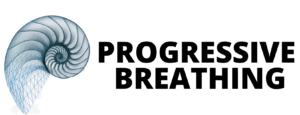How Nasal Breathing Improves Diaphragm Function in the Human Body
Nasal breathing plays a significant role in improving the function of the diaphragm, the primary muscle responsible for breathing. By promoting proper engagement of the diaphragm, nasal breathing enhances overall respiratory efficiency, oxygen uptake, and a host of other physiological processes. To understand how nasal breathing affects the diaphragm, we first need to explore where the diaphragm is located and why its function is so vital to the human body.
Location and Function of the Diaphragm
The diaphragm is a large, dome-shaped muscle located just beneath the lungs, separating the thoracic cavity (chest) from the abdominal cavity (stomach area). It attaches to the lower ribs, sternum, and lumbar spine. This muscle is essential for breathing, as it contracts and relaxes to create changes in pressure that allow air to flow in and out of the lungs.
When the diaphragm contracts, it flattens and moves downward, creating more space in the thoracic cavity. This action causes the lungs to expand and air to be drawn in. When it relaxes, the diaphragm moves back up into its dome shape, pushing air out of the lungs. This constant rhythm of contraction and relaxation is the basis for effective respiration.
The Importance of Diaphragm Function
The diaphragm’s function is crucial because it allows for deep, efficient breathing, which in turn supports oxygen exchange, cardiovascular health, and nervous system regulation. When the diaphragm works properly, it helps to:
- Maximize lung capacity: By fully engaging the diaphragm, the lungs are able to expand to their full potential, ensuring that oxygen is efficiently delivered to the bloodstream.
- Improve oxygen-carbon dioxide balance: Effective diaphragm function maintains an optimal balance of oxygen (O2) and carbon dioxide (CO2) in the body, crucial for overall metabolic function and maintaining healthy pH levels in the blood.
- Reduce strain on accessory muscles: Proper diaphragm use reduces reliance on smaller, secondary muscles in the neck, shoulders, and chest that can become overworked when breathing is shallow or improper.
How Nasal Breathing Enhances Diaphragm Function
Nasal breathing is the body’s natural way of breathing and is designed to optimize respiratory function, including the use of the diaphragm. Here’s how nasal breathing improves the diaphragm’s performance:
Promotes Diaphragmatic Breathing
Breathing through the nose naturally encourages diaphragmatic breathing, as opposed to shallow, chest-oriented breathing that occurs with mouth breathing. This is because nasal breathing slows down the intake of air, which allows the diaphragm to engage more fully, leading to deeper breaths. When you breathe through your nose, the airways and nasal passages create a slight resistance, which stimulates the diaphragm to contract more efficiently, facilitating the expansion of the lower lungs.
Regulates Breathing Rhythm
Nasal breathing helps to create a calm, steady rhythm in your breathing pattern. This rhythm supports the natural contraction and relaxation of the diaphragm, making each breath more efficient and less erratic. With mouth breathing, airflow tends to be faster and more shallow, which can cause the diaphragm to move less effectively.
Increases Nitric Oxide Production
One of the unique benefits of nasal breathing is that it promotes the production of nitric oxide in the nasal passages. Nitric oxide helps to dilate blood vessels and improves oxygen transport throughout the body, including to the diaphragm muscle itself. This not only supports better oxygenation but also enhances the overall performance of the diaphragm by keeping it well-nourished with blood flow.
Reduces Hyperventilation
Hyperventilation, often associated with mouth breathing, leads to rapid and shallow breathing, which diminishes the role of the diaphragm. Nasal breathing slows down the breath rate, preventing over-breathing and encouraging the diaphragm to work efficiently, which in turn improves the overall oxygen and CO2 balance in the blood.
Engages the Lower Lungs
With nasal breathing, air is directed more efficiently into the lower lobes of the lungs, where the highest concentration of blood flow is present for oxygen exchange. This deeper airflow encourages greater use of the diaphragm, as the muscle needs to contract more fully to facilitate lung expansion.
Why Proper Diaphragm Function Is Important
Optimizing diaphragm function through nasal breathing has widespread health benefits. These include:
- Improved oxygenation: Deeper, diaphragmatic breathing increases the amount of oxygen reaching the blood, fueling cells more effectively.
- Stress reduction: Nasal breathing activates the parasympathetic nervous system, which promotes relaxation and reduces stress, while diaphragmatic breathing helps regulate heart rate and blood pressure.
- Core stability: The diaphragm also plays a role in stabilizing the core muscles, which helps support posture and prevent injury.
In conclusion, nasal breathing enhances diaphragm function by encouraging deeper, slower, and more efficient breaths. This leads to better oxygen exchange, greater relaxation, and overall improved health.
Try 3 Free Nasal Breathing Practices designed to improve Diaphragm Function.



